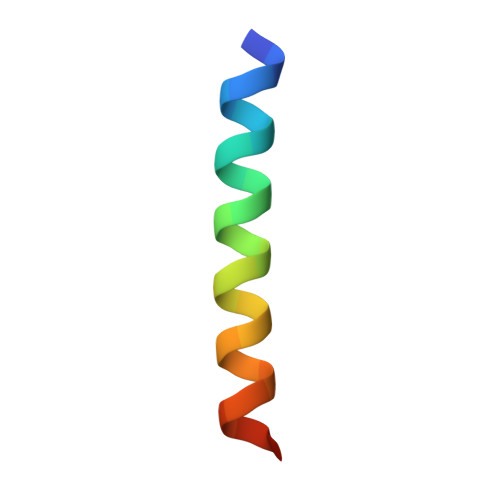Transient water wires mediate selective proton transport in designed channel proteins.
Kratochvil, H.T., Watkins, L.C., Mravic, M., Thomaston, J.L., Nicoludis, J.M., Somberg, N.H., Liu, L., Hong, M., Voth, G.A., DeGrado, W.F.(2023) Nat Chem 15: 1012-1021
- PubMed: 37308712
- DOI: https://doi.org/10.1038/s41557-023-01210-4
- Primary Citation of Related Structures:
7UDV, 7UDW, 7UDX, 7UDY, 7UDZ - PubMed Abstract:
Selective proton transport through proteins is essential for forming and using proton gradients in cells. Protons are conducted along hydrogen-bonded 'wires' of water molecules and polar side chains, which, somewhat surprisingly, are often interrupted by dry apolar stretches in the conduction pathways, inferred from static protein structures. Here we hypothesize that protons are conducted through such dry spots by forming transient water wires, often highly correlated with the presence of the excess protons in the water wire. To test this hypothesis, we performed molecular dynamics simulations to design transmembrane channels with stable water pockets interspersed by apolar segments capable of forming flickering water wires. The minimalist designed channels conduct protons at rates similar to viral proton channels, and they are at least 10 6 -fold more selective for H + over Na + . These studies inform the mechanisms of biological proton conduction and the principles for engineering proton-conductive materials.
- Department of Pharmaceutical Chemistry, University of California-San Francisco, San Francisco, CA, USA. huong.kratochvil@unc.edu.
Organizational Affiliation:
















